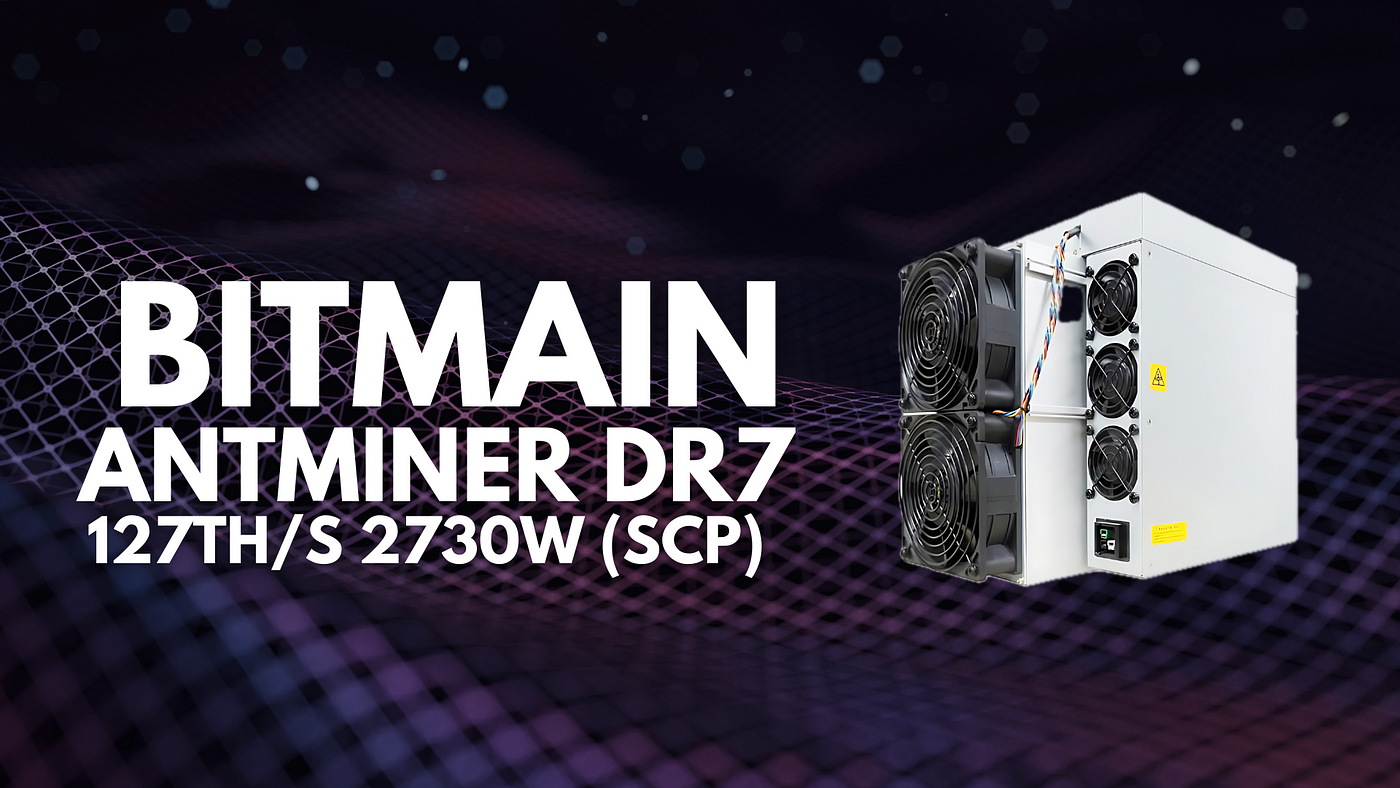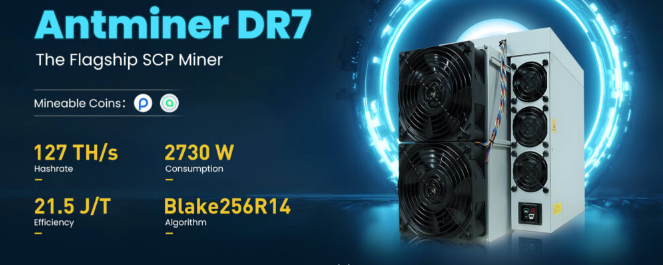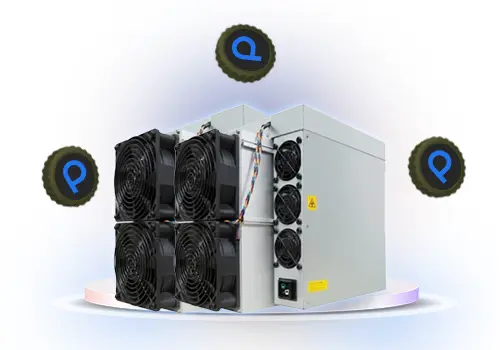Antminer DR7 SCP Miner Troubleshooting Hash Rate Drop: A Comprehensive Guide
The Antminer DR7 SCP Miner, a flagship product from Bitmain, has quickly gained recognition in the cryptocurrency mining community for its exceptional performance and energy efficiency. Designed specifically for the Blake 256R14 algorithm, the DR7 boasts a staggering hash rate of 127 TH/s with a power consumption of just 2730W, achieving an impressive energy efficiency ratio of 21.5 J/TH. These specifications make it an ideal choice for both large-scale mining operations and individual miners looking to maximize their returns.
However, even the most advanced mining hardware can encounter issues, and one of the most common problems faced by Antminer DR7 users is a sudden drop in hash rate. A decreased hash rate can significantly impact mining efficiency and profitability, making it crucial for operators to understand the potential causes and solutions. In this article, we’ll explore the common reasons behind hash rate drops in the Antminer DR7 and provide practical troubleshooting steps to restore optimal performance.
Understanding Hash Rate Drops: Why It Matters
Before diving into troubleshooting, it’s essential to understand what a hash rate drop means and why it’s a cause for concern. The hash rate refers to the speed at which a miner can solve complex mathematical problems to validate transactions on the blockchain. A higher hash rate translates to a greater chance of successfully mining a block and earning rewards.
When the Antminer DR7 experiences a hash rate drop, it’s essentially performing below its expected capacity, leading to reduced mining efficiency. This can result in fewer mined coins and increased operational costs due to wasted energy. Identifying and resolving the issue promptly is critical to maintaining profitability.

Common Causes of Hash Rate Drops in the Antminer DR7
Several factors can contribute to a hash rate drop in the Antminer DR7. Understanding these causes is the first step toward effective troubleshooting. Here are the most common culprits:
1. Overheating or Inadequate Cooling
Mining hardware generates significant heat during operation, and the Antminer DR7 is no exception. If the miner overheats, it may throttle its performance to prevent damage, resulting in a lower hash rate. Inadequate cooling, poor ventilation, or high ambient temperatures can all contribute to this issue.
2. Power Supply Issues
The Antminer DR7 requires a stable and sufficient power supply to operate at its full potential. Voltage fluctuations, insufficient power output, or faulty power cables can cause the miner to underperform.
3. Firmware or Software Glitches
Outdated or corrupted firmware can lead to performance issues, including hash rate drops. Similarly, software-related problems, such as incorrect configuration settings or compatibility issues, can affect the miner’s efficiency.
4. Hardware Malfunctions
Components like hash boards, control boards, or fans can fail or degrade over time, leading to reduced performance. Dust accumulation or physical damage can also impact the miner’s functionality.
5. Network Connectivity Problems
A stable internet connection is essential for mining operations. Network latency, dropped connections, or misconfigured settings can cause the miner to lose efficiency.
6. Environmental Factors
Extreme environmental conditions, such as high humidity or excessive dust, can affect the miner’s performance. Additionally, operating the Antminer DR7 outside its recommended temperature range can lead to throttling or hardware damage.
Troubleshooting Steps to Address Hash Rate Drops
Now that we’ve identified the potential causes, let’s explore practical steps to troubleshoot and resolve hash rate drops in the Antminer DR7.
1. Monitor Temperature and Improve Cooling
Start by checking the miner’s temperature readings through the management interface. If the temperature exceeds the recommended range (typically 5–40°C for the DR7), take immediate action to improve cooling:
- Ensure the miner is placed in a well-ventilated area with adequate airflow.
- Clean any dust or debris from the fans and heatsinks.
- Consider using additional cooling solutions, such as external fans or air conditioning units.
2. Verify Power Supply and Connections
Inspect the power supply unit (PSU) and cables for any signs of damage or wear. Ensure the PSU provides sufficient power output (at least 2730W for the DR7) and that all connections are secure. If necessary, replace faulty components with high-quality replacements.

3. Update or Reinstall Firmware
Check for firmware updates on Bitmain’s official website and install the latest version if available. If the hash rate drop persists after updating, consider reinstalling the firmware to eliminate potential glitches.

4. Inspect Hardware Components
Conduct a thorough inspection of the miner’s internal components. Look for signs of damage, corrosion, or loose connections on the hash boards and control board. Replace any malfunctioning parts promptly.
5. Optimize Network Settings
Ensure the miner is connected to a stable and high-speed internet connection. Check for network latency or packet loss and adjust router settings if necessary. Using a wired connection instead of Wi-Fi can also improve stability.

6. Maintain Optimal Environmental Conditions
Operate the Antminer DR7 within its recommended environmental parameters. Use dehumidifiers or air purifiers if necessary to control humidity and dust levels. Regularly clean the miner to prevent dust buildup.
Preventative Measures for Long-Term Performance
To minimize the risk of future hash rate drops, consider implementing the following preventative measures:
- Regular Maintenance: Schedule routine inspections and cleaning to keep the miner in optimal condition.
- Monitoring Tools: Use monitoring software to track performance metrics and detect issues early.
- Backup Power Supply: Invest in a reliable backup PSU to ensure uninterrupted operation during power fluctuations.
- Firmware Updates: Stay informed about firmware updates and apply them promptly to benefit from performance improvements and bug fixes.
Conclusion: Maximizing the Potential of Your Antminer DR7
The Antminer DR7 SCP Miner is a powerful tool for cryptocurrency mining, but like any sophisticated hardware, it requires proper care and maintenance to perform at its best. By understanding the common causes of hash rate drops and following the troubleshooting steps outlined in this guide, you can quickly identify and resolve performance issues, ensuring your miner operates efficiently and profitably.
Remember, proactive maintenance and attention to detail are key to maximizing the lifespan and productivity of your Antminer DR7. Whether you’re managing a large-scale mining farm or running a single unit at home, these insights will help you maintain peak performance and protect your investment in cryptocurrency mining.